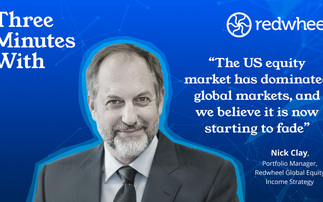Talking Strategies: The number of companies in Asia with higher payout ratios have grown since the mid-1990s, but some investors remain wary of searching for income in Asia and Japan. In this video, Jupiter's Jason Pidcock and Dan Carter explain why this needn't be the case.
Dividends in Asia have seen a huge pick up since the mid-1990s and early 2000s, and from 1995 to 2001 alone investors saw a big pick-up in the average payout ratio too, which since 2001 has been fairly stable at about 40% (ex-Japan).
For UK-based investors who want to diversify their source of income, they are certainly able to do that by investing in Asia. Yet for many investors choosing to invest in Asia, the quandary of having to choose between growth and income remains. Is there any reason why investors cannot succeed in doing both?
Jason Pidcock, Head of Strategy, Asian Income and Fund Manager of the Jupiter Asian Income Fund, believes many investors look too closely at growth and income. For any investor, what should be important is total return, he explains.
"In my fund, I am looking to maximise total return from a mixture of income and growth. Now, clearly, if you have a company which has a dividend yield of 5% and is growing its earnings very regularly by 5% per year, over the long term it may be able to generate 10% total return fairly steadily. That is as good as a company growing 10% a year with no dividend, or a company growing at 8% a year with a 2% dividend yield."
Dan Carter, who manages the Jupiter Japan Income Fund, agrees. Whilst Japanese profits are very well linked to global growth and global trade, and it is absolutely true that if we see a decline in those areas then that is likely to be bad for the overall profitability of the corporate, his fund is formed of a concentrated portfolio of just 40 stocks with a very high active share. This means it is entirely plausible for him to orientate his portfolio so that all 40 stocks can do well even in an environment which is negative for overall profits.












